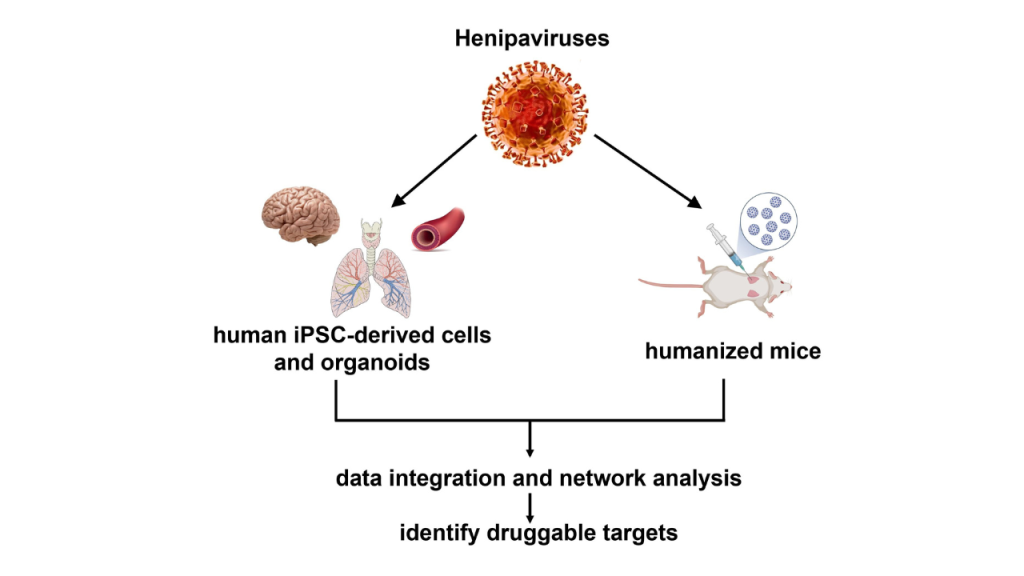Minigenome replication systems, human iPSC-derived cell and organoid platforms, and humanized mouse models combined with computational analysis will be used to achieve a more comprehensive human-relevant biological understanding of the replication and pathogenesis of Nipah virus and other members of the henipavirus genus. This will include a comparative analysis of infected human primary-like respiratory and neuronal cell and organoid systems and humanized mouse models (histopathology, transcriptomics, immunophenotyping, viral tropism) to understand human-relevant immune responses to infection. The transcriptional data generated from the in vitro and in vivo models will be compared, integrated and analyzed using rigorous bioinformatics and computational biology approaches to identify and rank order a list of potential drug targets and biomarkers against Nipah virus infection in the specific tissues and cell types. The 3-year project was initiated in late 2022 and is hosted by Boston University (BUMC) and the principal investigator is Professor Elke Mühlberger.
The picture above illustrates the supported project and is provided by Elke Mühlberger.
